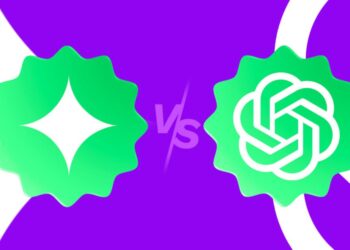In recent times, many users have noticed advertisements appearing within the ChatGPT interface. This shift has sparked curiosity and led to various questions about the reasoning and implications behind this decision. Understanding the motivations and mechanics behind this development can help users navigate the platform effectively.
The Evolution of ChatGPT
As artificial intelligence technology has developed, platforms like ChatGPT have continually adapted to user needs and economic realities. Here are some pivotal aspects of this evolution:
Increased User Base
- Rapid Growth: ChatGPT has seen an surge in users, indicating the platform’s increasing popularity.
- Diverse Audience: The application is being used by a wide range of demographics, from casual users to professionals seeking assistance in various fields.
Escalating Operational Costs
- Infrastructure Maintenance: Running a state-of-the-art chatbot requires significant resources for servers, maintenance, and updates.
- Development Investments: Ongoing improvements and new feature implementations demand continual financial support.
Reasons for Incorporating Ads
The introduction of advertisements serves several purposes for the ChatGPT platform. The following points outline why ads are becoming a part of the user experience:
Monetization Strategy
- Revenue Generation: Ads provide a new revenue stream, allowing ChatGPT to remain financially viable while enhancing services.
- Free Access: Advertisements enable users to access the platform at no charge, benefiting users who prefer not to subscribe.
Supporting Improvements
- Funding Enhancements: Income generated from ads can be reinvested into developing better algorithms, expanding knowledge bases, and improving overall functionality.
- User Experience: With more funding, the platform can focus on providing a seamless and enriched experience for users.
Market Competitiveness
- Staying Competitive: As other AI platforms introduce advertising or premium features, integrating ads helps ChatGPT maintain its competitive edge.
- Diverse Offerings: Advertisements can promote relevant tools or services that may enhance user experience, providing useful and time-saving resources.
User Experience and Feedback
The inclusion of advertisements can impact how users perceive and interact with the platform. Here are some user-oriented considerations:
Balancing Ads with Functionality
- Non-Intrusive Ads: Efforts are made to ensure that ads do not detract from the primary experience of using ChatGPT.
- Targeted Advertising: Ads are often tailored to user preferences, making them more relevant and appealing.
User Feedback Mechanisms
- Surveys and Ratings: ChatGPT actively seeks user feedback regarding the ad experience to gauge satisfaction and make adjustments.
- Continuous Improvement: The team remains responsive to user concerns, aiming to refine the advertising approach over time.
The Future of ChatGPT with Ads
As the platform continues to grow and evolve, advertisements will likely remain an integral part of the user experience. Here are some anticipated developments:
Customization Options
- Ad Preferences: Future iterations may allow users to customize the type of ads they see for a more tailored experience.
- Enhanced Filtering: Users might have options to filter or minimize ad exposure based on personal preference.
Innovations in Advertising
- Interactive Ads: Expect to see formats that allow users to engage with ads in more meaningful ways, blurring lines between content and advertising.
- Partnerships: Collaborations with brands could lead to unique offerings that are beneficial for users, merging functionality with promotion.
Understanding the inclusion of advertisements in ChatGPT sheds light on the platform’s growth strategy and commitment to user accessibility. As users navigate this new landscape, it’s essential to recognize the underlying motivations that drive these changes and how they shape the overall experience.






